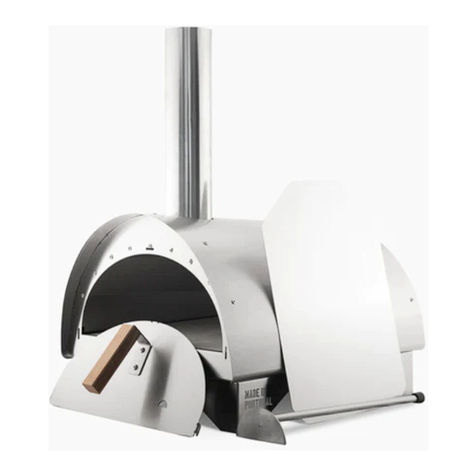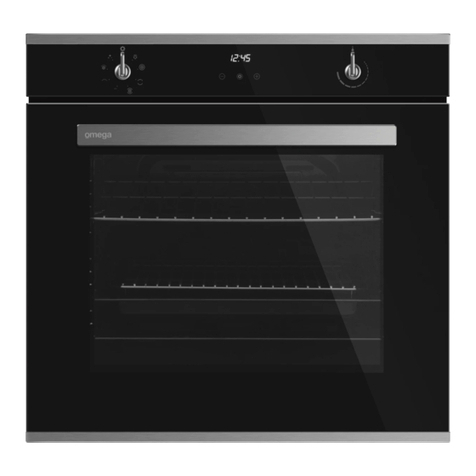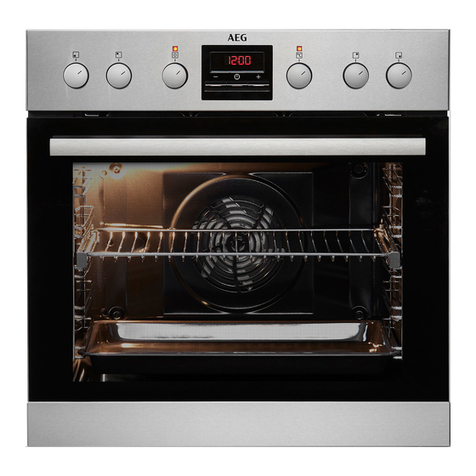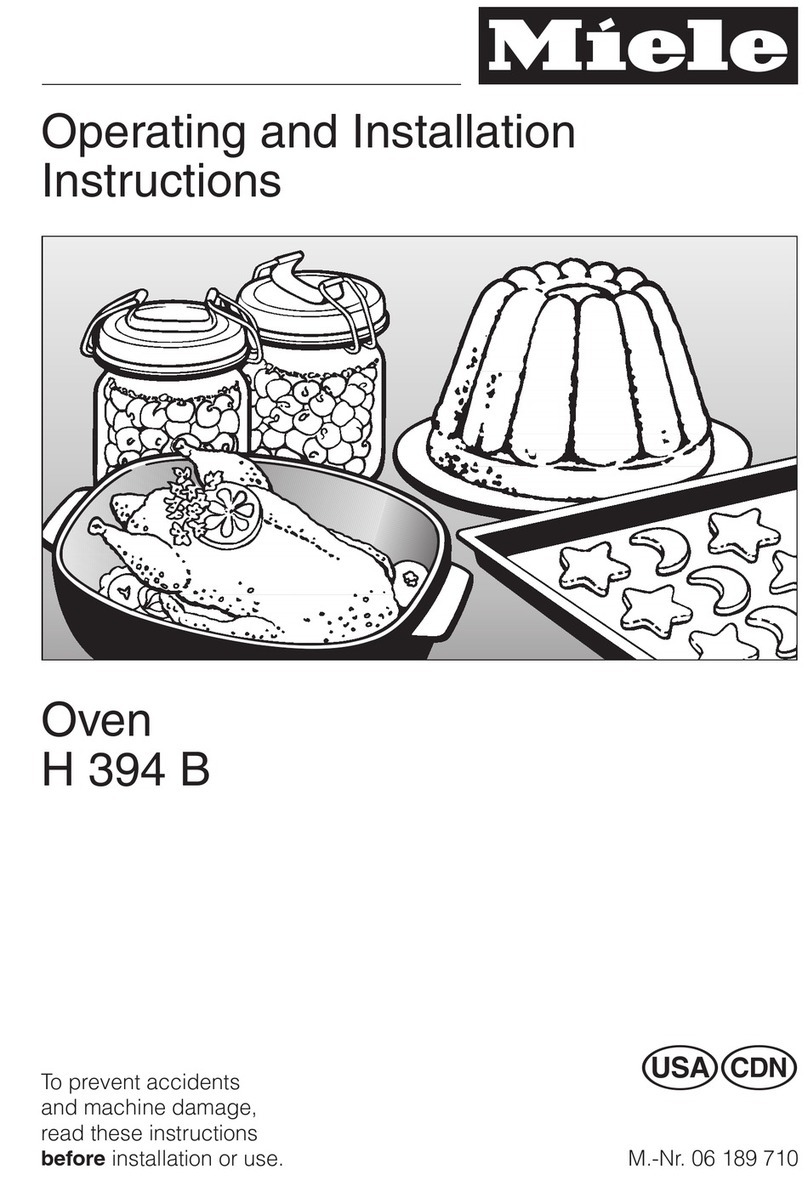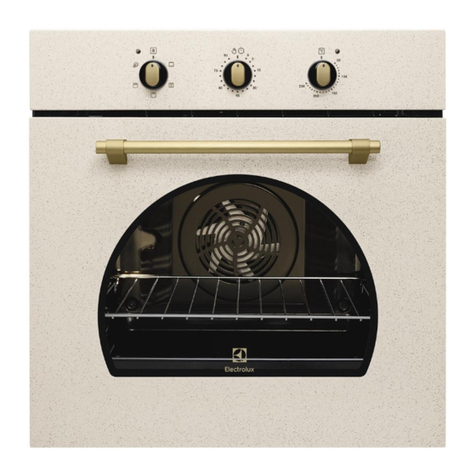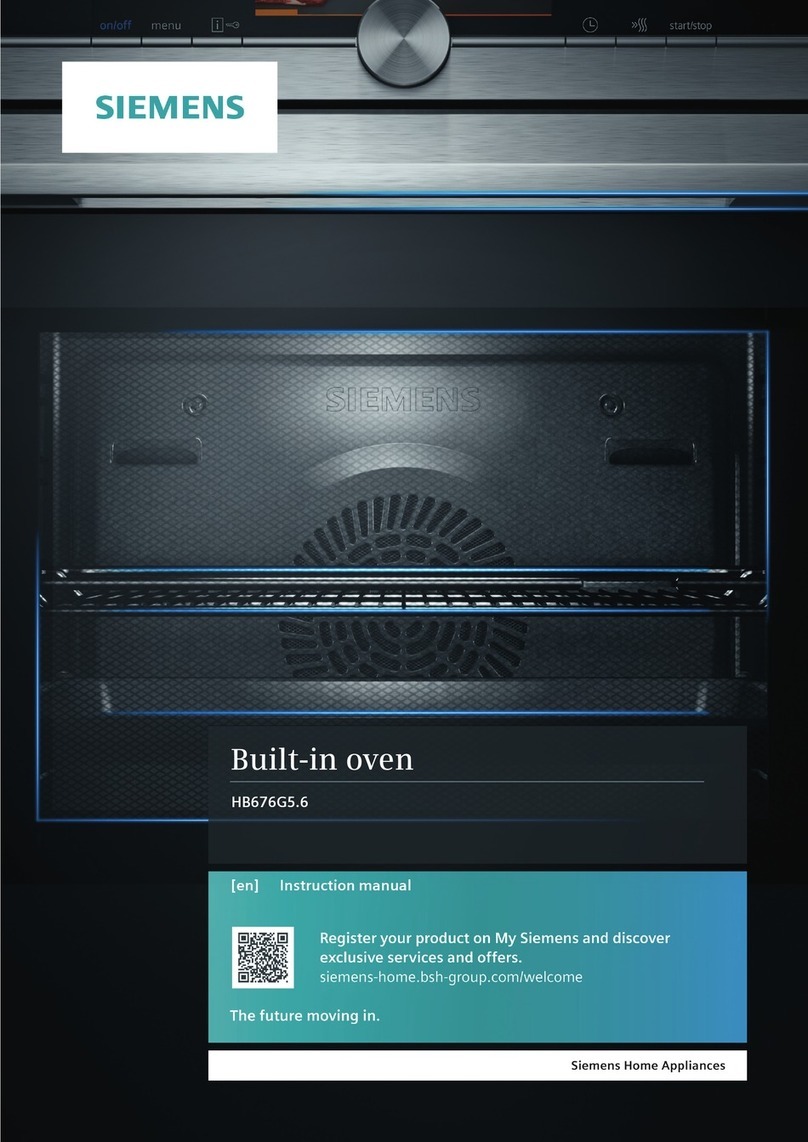CRU Cr60 User manual

COMPONENTS & ASSEMBLY
To have your Cr60 oven ready to cook, you just need to get the components together
Cr60 wood fired oven user’s manual | www.www.cruovens.com
1
4
2
5
3
6
Dimensions: L33” x W33” x H43” - Weight: 220 lbs
Insert thermometer Place refractory bricks and
burning wood rack inside the oven chamber
Insert chimney tube into hole
Your oven is ready!
Fit the chimney’s top Place door
Refractory
brick
Thermometer Burning
wood rack
Chimney
To p
Chimney
Tube
Door Oven
FIRE IGNITION INSTRUCTIONS
1 — Build a tower of kindling over a natural firelighter in the middle of the refractory brick floor,
towards the front of the oven.
2 — Keep adding kindling pieces to the fire (please always be mindful of fire safety) every couple
of minutes to help build the fire and produce the necessary heat; aer a few minutes, the
fire should be at a reasonable size and the heatshould now be quite intense (when you are
unable to hold your hand any closer than about 9” from the mouth of the oven).
3 — Let the fire build up and generate more heat for about 5 more minutes (keep feeding it with
smaller pieces of wood); the fire should be ready to be pushed to the back or the side of the
oven using the burning wood rack.
4 — Once the fire has been pushed to the back or the the side, add about 3 to 4 pieces of 8” - 10”
long with about a 2” diameter hardwood (please be mindful of the combusble guidelines).
5 — You should now have a good bed of red embers with a healthy flame. You’re now ready to
start cooking.
6 — Every 15 minutes or so, the flames may start to wane. To connue cooking, add 3 to 4 more
pieces of 6” logs to maintain a healthy fire and heat. Keep in mind that closing the oven door
will cut off oxygen to the fire.
WARNING:
DO NOT CLOSE THE OVEN DOOR WHILE THERE ARE FLAMES INSIDE THE OVEN
1. Please keep children and pets at a safe distance at all mes.
2. Your Cr90 oven will reach very high temperatures when a fire is lit within. Always use
protecve heat-resistant gloves to handle tools and cooking implements.
3. Beware of flying sparks from the oven opening.
4. Ensure that no combusble materials are within range of your oven at any me.
5. Do not shut the oven’s doors while there are flames inside. Closing the door will cut off
oxygen to the fire, eventually weakening the flames or causing a sudden fire erupon when
the door is removed and oxygen flows into the oven again.
6. Do not alter the oven in any way, it has been designed to opmize its safety and funconality.
7. Do not burn contaminated wood (with chemicals), garbage, or flammable fluids in your oven.
8. DO NOT MOVE OR CARRY OVEN WHILE STILL HOT OR WARM.
SAFETY GUIDELINES
1. Always use natural, untreated firewood. Never use pressure treated or painted wood
such as old fence posts. Our favorite wood to use is silver birch.
2. Do not use pellets, chipped wood products, or sappy wood to burn in the Cr90.
3. NEVER USE ANY TYPE OF ACCELERANT, SUCH AS GAS, PARAFFIN, LIGHTER FLUID,
OR SIMILAR PRODUCTS. THESE ARE EXTREMELY DANGEROUS AND CAN LEAD TO
EXPLOSIONS WITHIN YOUR OVEN.
FIRE IGNITION GUIDELINES
• Over me, the top of the opening and the door on your oven can become black as the
soot from the fire builds up. You can simply clean both with soap, water, and a
nonabrasive sponge.
• The floor of the oven should be cleared of ashes and embers when fully cold. Once you
have removed the embers, please clean the refractory brick by using a brush to dust it
down and remove any residue from the embers.
• Beware when disposing of ashes before they have fully cooled down (natural cooling can
take several hours).
• It is perfectly acceptable to turn the refractory brick over between uses.
• DO NOT USE THE REFRACTORY BRICK WHEN WET AS IT ABSORBS MOISTURE,
CAUSING IT TO CRACK (WHICH DOES NOT DIMINISH THE BRICK’S ABILITY TO COOK).
• Before storing the oven for a long period, apply WD-40 or paraffin wax, using a nonabrasive
cloth or coon balls, to the exterior metal surfaces of the oven to protect against corrosion.
• When not in use, the oven should be covered or sheltered from the elements.
MAINTENANCE
NEVER PUT YOUR HANDS OR ARMS INSIDE OR OUTSIDE THE OVEN WHEN
HOT, UNLESS YOU ARE WEARING ADEQUATE HEAT RESISTANT GLOVES.
CAUTION: TEMPERATURES OVER 450°C / 850°F MAY CAUSE THE DETERIORATION
OF THE OVEN AND ITS COMPONENTS.
NEVER PUT YOUR HANDS OR ARMS INSIDE OR OUTSIDE THE OVEN WHEN
HOT, UNLESS YOU ARE WEARING ADEQUATE HEAT RESISTANT GLOVES.

Wood fired oven user’s manual
- Designed and manufactured in Portugal -
www.cruovens.com
Benefits of cooking with fire
When cooking with fire, it is essenal to start by making a high
fire, allowing the oven to reach a high temperature. Once the
oven is heated, the refractory brick floor becomes a radiator,
enabling food to cook from underneath as well as from above. In
your Cru Oven, the fire and smoke are drawn through the oven
and across the food as it cooks, adding an incredible flavor to the
various foods you are cooking.
This is something impossible to achieve when cooking by other
means (or methods). Heat will allow food to cook, while flames
will roast. The balance between the heat within the oven and
the flames present is the key to a perfect result.
You can cater to for a lot of people in a short period and at a
fracon of the cost. Cooking becomes easy once you have
mastered the balance between heat generated from embers
(allowing for slow cooking) and flames (more intense heat that
roasts). Food that creates a lot of juices like fish, meats, etc.,
should be cooked in appropriate cookware for the recipe and
heat of the oven.
Enjoy your Cru Champion oven!
Bricks Warning
• The refractory bricks on the oven floor have a very low
thermal conducvity, which means that they accumulate heat
and slowly release it, allowing to maintain heat within the
oven’s chamber for a long me and cook inside the oven.
• They are made by firing at very high temperatures
(1200ºC./2200ºF.) using ceramic paste containing minerals.
These refractory bricks are made in the tradional way using
a semi-arsanal process, therefore it is not uncommon for
the bricks to have minor imperfecons (like grounded
corners/edges) because of the very high temperatures with
which the stone is fired.
• Another important feature of these bricks is that they are
quite brile - suscepble to breakage if improperly handled
or if moist when a fire is lit. Please take care of the refractory
bricks: do not bang, drop, or mishandle, and make sure they
are dry before starng a fire on them.
• Even if the bricks break you may sll use them normally, being
broken does not diminish the bricks’ ability to retain heat.
* it is not uncommon for the stones to have their corners ground.
Other CRU Oven manuals
Popular Oven manuals by other brands
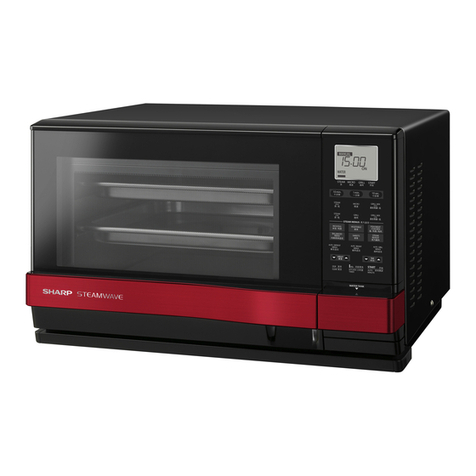
Sharp
Sharp AX-1100 Operation manual with cookbook
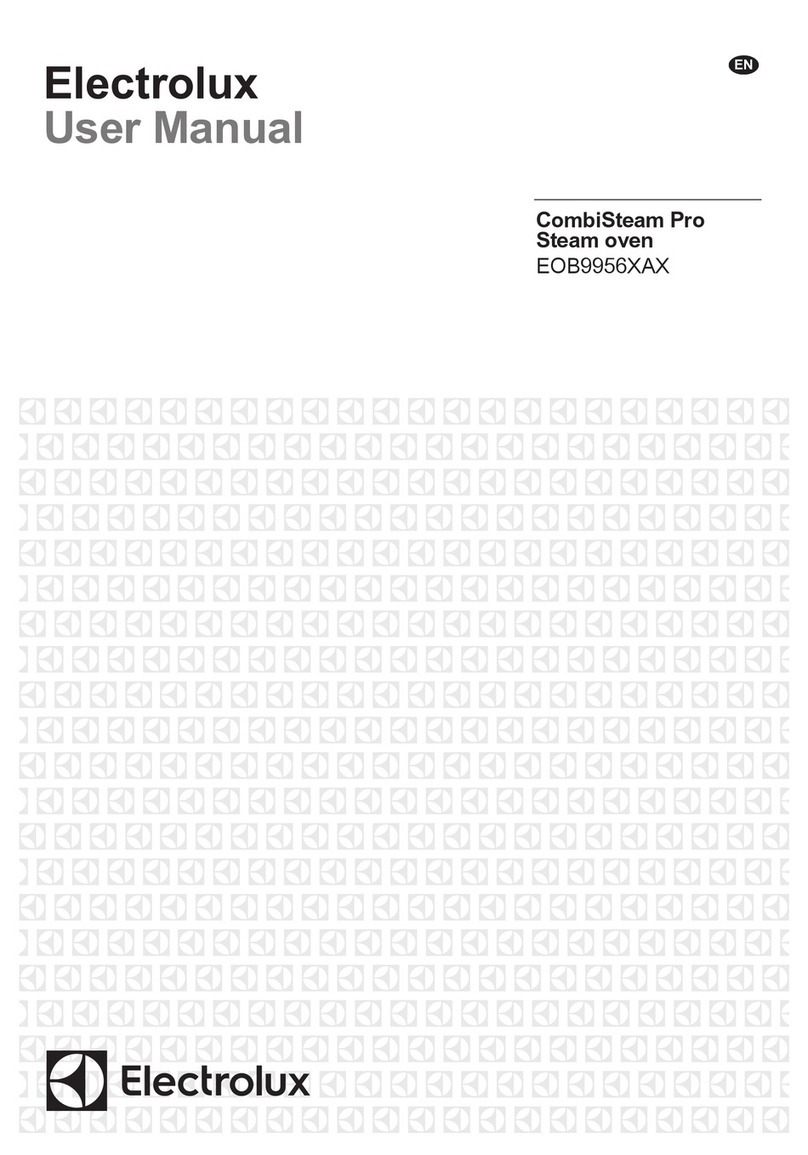
Electrolux
Electrolux EOB9956XAX user manual

Kenmore
Kenmore HORNO 790.42003 Use and care guide
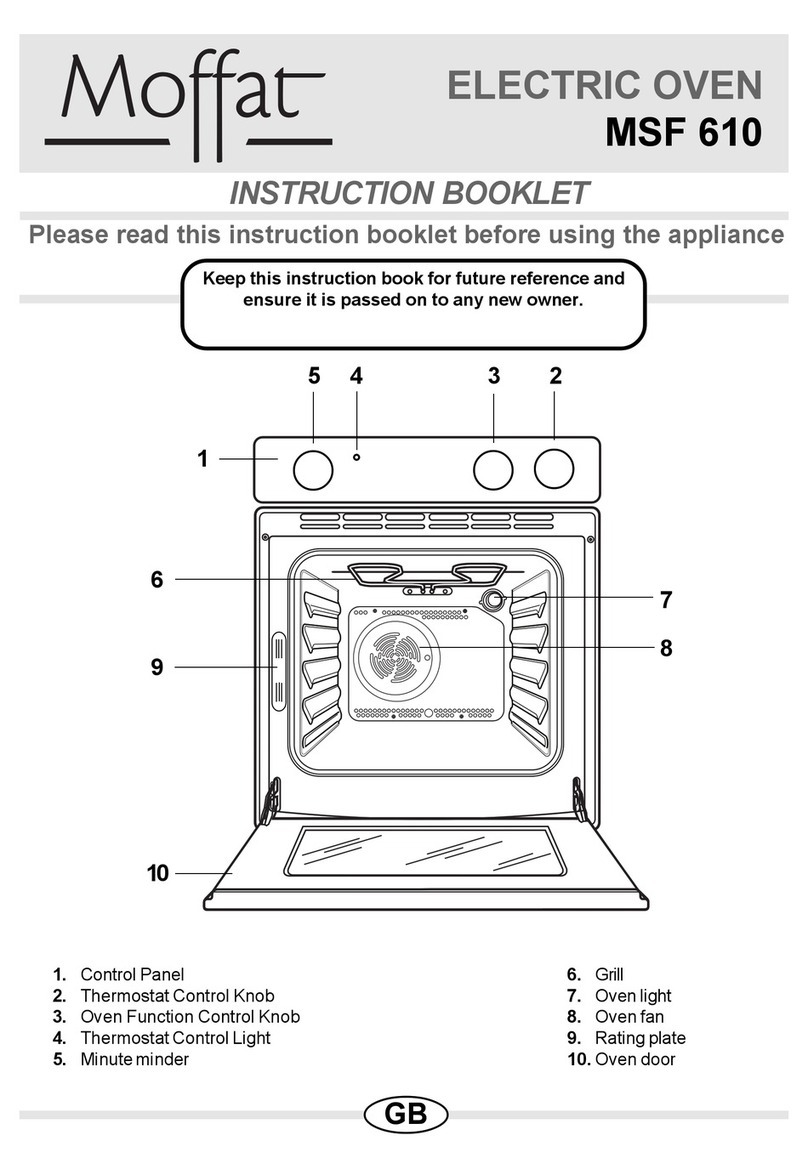
Moffat
Moffat MSF 610 Instruction booklet

AEG Electrolux
AEG Electrolux COMPETENCE D3100-5-M Installation and operating instructions
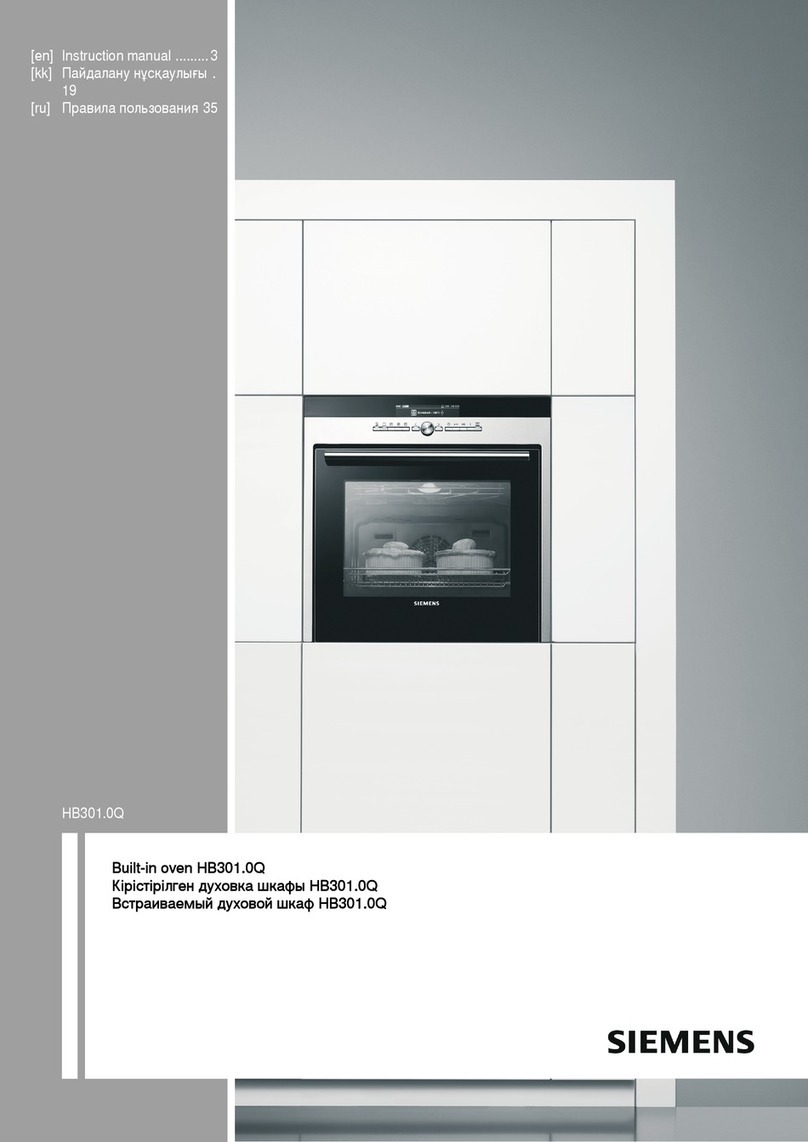
Siemens
Siemens HB301 0Q Series instruction manual
